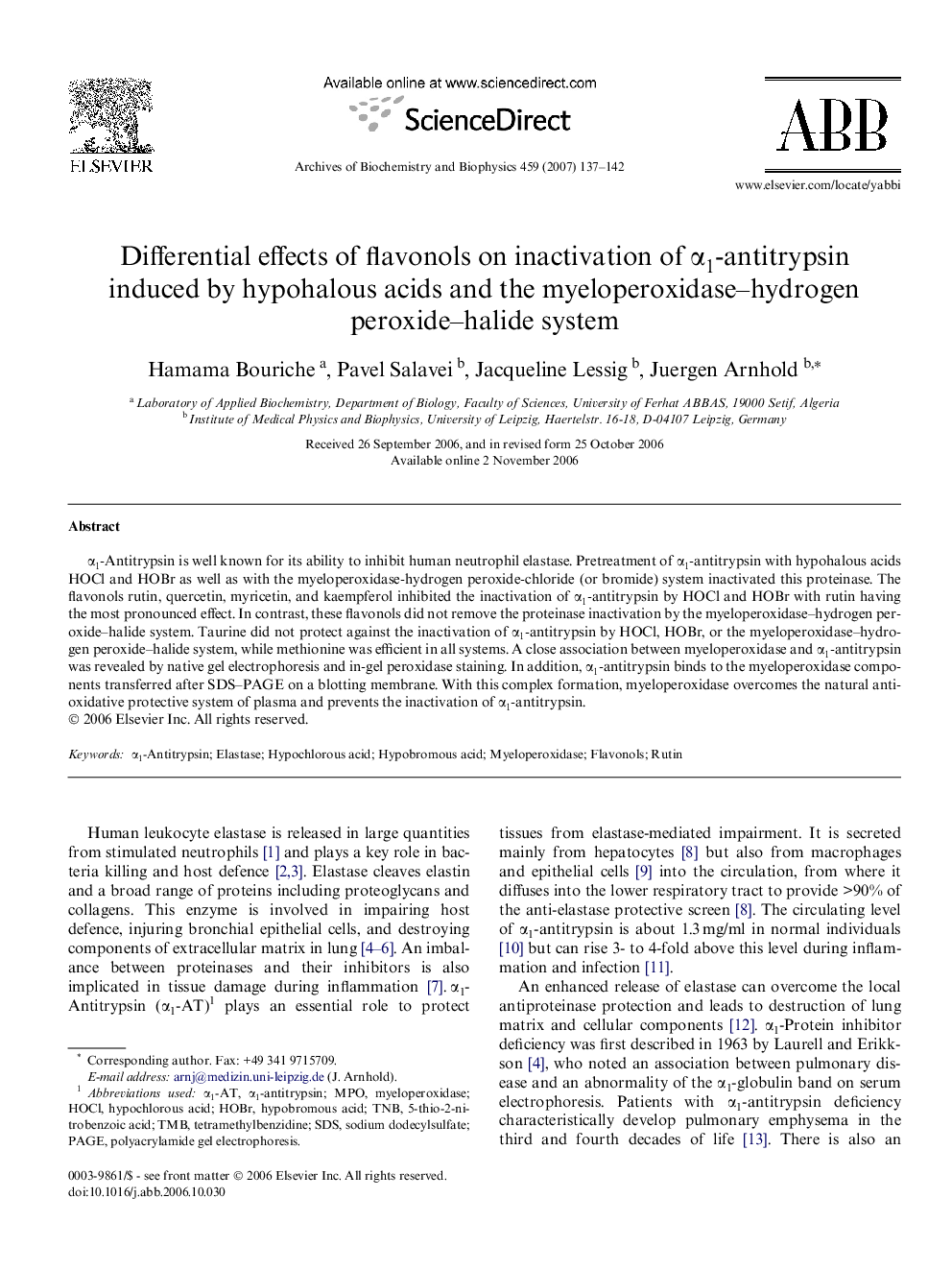| Article ID | Journal | Published Year | Pages | File Type |
|---|---|---|---|---|
| 1927330 | Archives of Biochemistry and Biophysics | 2007 | 6 Pages |
α1-Antitrypsin is well known for its ability to inhibit human neutrophil elastase. Pretreatment of α1-antitrypsin with hypohalous acids HOCl and HOBr as well as with the myeloperoxidase-hydrogen peroxide-chloride (or bromide) system inactivated this proteinase. The flavonols rutin, quercetin, myricetin, and kaempferol inhibited the inactivation of α1-antitrypsin by HOCl and HOBr with rutin having the most pronounced effect. In contrast, these flavonols did not remove the proteinase inactivation by the myeloperoxidase–hydrogen peroxide–halide system. Taurine did not protect against the inactivation of α1-antitrypsin by HOCl, HOBr, or the myeloperoxidase–hydrogen peroxide–halide system, while methionine was efficient in all systems. A close association between myeloperoxidase and α1-antitrypsin was revealed by native gel electrophoresis and in-gel peroxidase staining. In addition, α1-antitrypsin binds to the myeloperoxidase components transferred after SDS–PAGE on a blotting membrane. With this complex formation, myeloperoxidase overcomes the natural antioxidative protective system of plasma and prevents the inactivation of α1-antitrypsin.
